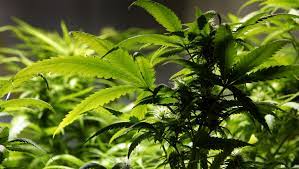
Palm Springs, California, is a city that has a rich and fascinating history of cannabis culture. From the early days of prohibition to the present era of legalization, Palm Springs has witnessed the evolution of cannabis as a medicine, a recreational substance, and a business opportunity. In this blog post, we will explore the historical significance of cannabis in the Palm Springs area, its cultural impact and influence, and its current status and prospects in the local industry.
The Prohibition Era
The history of cannabis in Palm Springs dates back to the early 20th century, when cannabis was widely used by Mexican immigrants, African-American jazz musicians, and Caribbean immigrants who settled in the region. Cannabis was seen as a way to cope with the harsh realities of life, such as poverty, racism, and discrimination. However, cannabis also faced a strong opposition from the authorities, who associated it with crime, violence, and moral decay. In 1937, the federal government passed the Marihuana Tax Act, which effectively banned the possession and sale of cannabis nationwide. This marked the beginning of the prohibition era, which lasted for several decades and resulted in the criminalization and stigmatization of cannabis users.
The Medical Marijuana Movement
The prohibition era did not stop the use of cannabis for medical purposes, especially among those who suffered from chronic pain, nausea, and other conditions. In the 1970s, a group of activists and patients formed the Compassionate Use Club of Palm Springs, which was one of the first organizations to provide cannabis to patients with a doctor’s recommendation. The club operated in secrecy, risking arrest and prosecution, but also gained support and recognition from the local community. In 1996, California became the first state to legalize medical marijuana with the passage of Proposition 215, which allowed patients and caregivers to grow and possess cannabis for medical use. Palm Springs, as a progressive and tolerant city, welcomed this change and became a pioneer in the medical marijuana industry.
The Recreational Cannabis Revolution
The legalization of medical marijuana paved the way for the legalization of recreational cannabis, which was achieved in 2016 with the passage of Proposition 64. This initiative allowed adults 21 and over to possess, consume, and cultivate cannabis for personal use, as well as to establish a regulated and taxed market for the production and sale of cannabis products. Palm Springs, once again, embraced this opportunity and became one of the first cities in California to allow recreational cannabis businesses to operate within its boundaries. The city adopted ordinances and regulations to ensure the safety, quality, and compliance of the cannabis industry, as well as to generate revenue and create jobs for the local economy. Today, Palm Springs boasts a thriving and diverse cannabis market, with dozens of dispensaries, cultivators, manufacturers, and delivery services catering to the needs and preferences of consumers. Palm Springs also offers a variety of cannabis-related experiences, such as wellness retreats, cannabis-infused culinary events, and cannabis-themed tours and attractions.
Conclusion
Palm Springs has a long and remarkable history of cannabis culture, which reflects its progressive and innovative spirit. From the prohibition era to the present day, Palm Springs has witnessed the transformation of cannabis from a forbidden substance to a legal and legitimate industry. Palm Springs has also contributed to the advancement and acceptance of cannabis as a medicine, a recreational product, and a lifestyle choice. Palm Springs is a city that celebrates and embraces cannabis culture, and offers a unique and exciting destination for both entrepreneurs and enthusiasts alike.
Explore more on our Palm Desert page.

